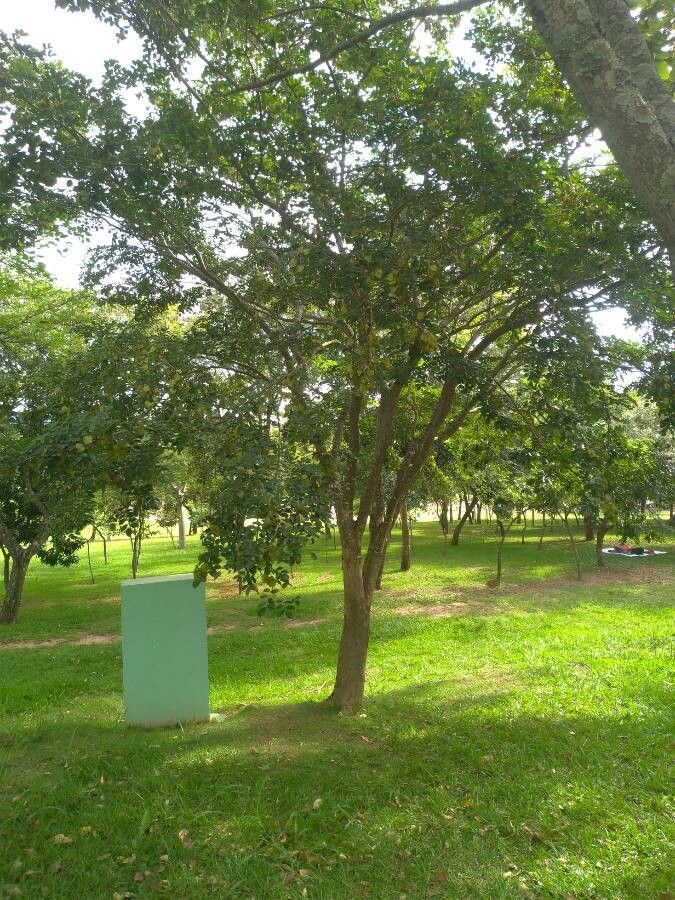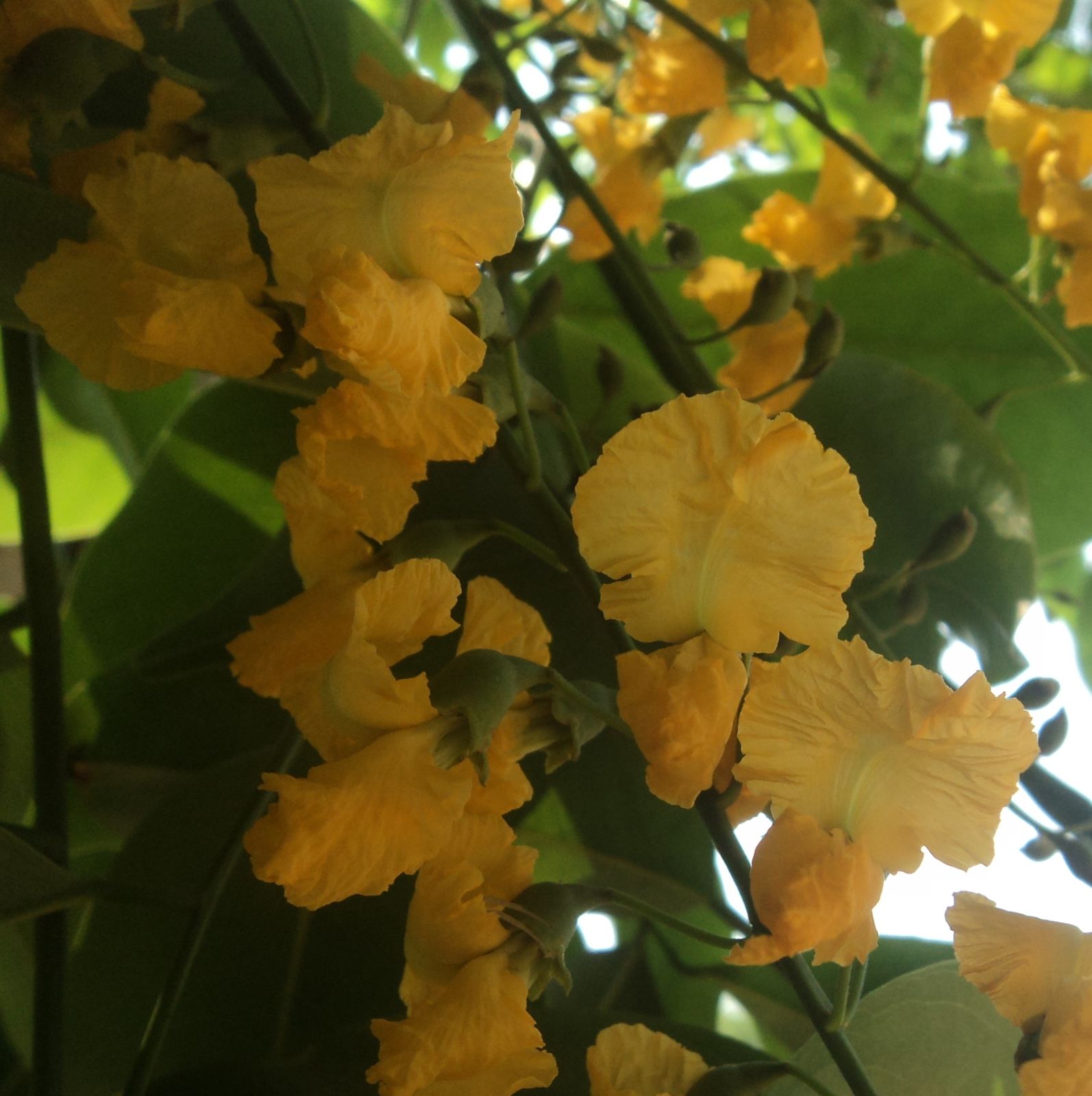Narra
pterocarpus indicus
Also known as: ["Amboyna wood","New Guinea rosewood","Moluccan rosewood"]
Overview
A large deciduous tree native to Southeast Asia, known for its durable timber and ornamental value.
Benefits & Perks
["long-flowering","disease resistant","wildlife attractant (bees, butterflies, birds)","shade tolerant","rare/collector’s item"]
Botanical Classification
| Phylum: | Magnoliophyta |
| Class: | Magnoliopsida |
| Order: | Fabales |
| Family: | Fabaceae |
| Genus: | Pterocarpus |
| Botanical Name: | Pterocarpus indicus |
Plant Characteristics
Basic Information
- Category: Trees
- Suitable Location: outdoor garden in tropical or subtropical regions, protected from strong winds
- Suitable For:
- Is Weed: No
- Allergenicity: low
Environmental Needs
- Climate: {"temperatureRange":"20–35°C"}
- Hardiness: {"zones":"10–12"}
- Misting: rarely required, only if ambient humidity is very low
- Drainage: Fast-draining to prevent waterlogging.
- Soil Type: Well-draining potting mix with added organic matter; cactus or succulent mix can work well.
Maintenance Level
- Maintenance Level: moderate
- Toughness Level: high
- Pruning Frequency: Annually in late winter or early spring; light pruning can be done as needed year-round.
- Pruning Intensity: Moderate; remove up to one-third of old growth if necessary.
Care Details
Ideal Sunlight Coverage:
Bright indirect light for 6–8 hours daily; tolerates partial shade but requires some direct sun for optimal growth.
Sunlight Tolerance Tips:
Acclimate gradually to direct sunlight to avoid leaf scorch; place in a spot with morning sun and afternoon shade; adjust indoor placement to mimic natural light cycles.
Care Requirements
Care Difficulty
moderatemoderate
Sunlight
full sun to partial shade
Rotate plant weekly for even light exposure; use sheer curtains to filter intense sunlight; avoid placing near west-facing windows in summer.
Watering
every 7–10 days during active growth, reducing to every 14–21 days in winter
Water thoroughly until it drains from the bottom; allow soil to dry partially between waterings; avoid overwatering.
Soil
well-draining, loamy soil with organic matter
pH: Slightly acidic to neutral (pH 6.0–7.0).
Use a mix with good drainage; avoid heavy clay soils; top-dress with compost annually.
Temperature
Prefers 65–85°F (18–29°C); can tolerate brief dips to 50°F (10°C) but thrives in warm, stable conditions.
Protect from frost; maintain consistent indoor temperatures; avoid sudden temperature fluctuations.
Fertilizing
every 4–6 weeks during spring and summer with balanced liquid fertilizer, none in winter
Fertilize after watering to prevent root burn; flush soil occasionally to prevent salt buildup; avoid over-fertilizing.
Propagation
Methods
Stem cuttings or air layering; stem cuttings are more common for home growers.
Step-by-Step Propagation Guide
- Select a healthy stem.
- Cut below a node.
- Apply rooting hormone.
- Plant in medium.
- Maintain humidity.
Best Time: Spring or early summer when the plant is actively growing.
Environment
High humidity (70–90%), warm temperatures (75–85°F), and indirect light.
Medium
Well-draining mix of peat, perlite, and sand; can also use water propagation for cuttings.
Hormone
Recommended to use rooting hormone powder for faster root development.
Timeline
Roots may develop in 4–8 weeks; establishment in new pot can take 3–6 months.
Tools Needed
Pruning shears, rooting hormone, plastic bag or propagator, misting bottle.
Quick Tips
Use softwood cuttings for best results; maintain consistent moisture; provide bottom heat if possible.
Pruning & Repotting
Pruning Guide
Method
Selective pruning of branches to maintain shape; avoid heavy cuts that may shock the plant.
Pruning Plan
Remove dead or overgrown branches to improve shape and air circulation; encourage bushier growth.
Tools
Pruning shears, loppers, gloves, disinfectant.
Checklist
Disinfect tools; prune dead/damaged branches; shape as desired; clean up debris.
Repotting Guide
Best Season
Spring, before the active growing season begins.
Pot Size
Increase pot size by 2–3 inches in diameter; ensure good drainage holes.
Method
Remove plant gently; trim roots if crowded; place in new pot with fresh soil; water lightly.
Suggestions
Repot every 2–3 years or when roots outgrow the pot; necessary to refresh soil and provide space.
Checklist
Prepare new pot; trim roots if needed; use fresh soil mix; water after repotting.
Advanced Care Tips
Watering Mastery
Watering Checklist
Check soil moisture; water deeply; ensure drainage; adjust for season.
How to Apply Water Properly
Water directly at the root zone, ensuring even saturation; water early in the morning to minimize evaporation; ensure excess water drains away to prevent waterlogging.
Watering Schedule Tips
Water deeply once the top inch of soil feels dry; reduce frequency in winter to prevent root rot.
Soil Improvement
Add perlite or coarse sand for drainage; incorporate compost for fertility; ensure proper aeration.
Temperature Stress Management
Signs of Temperature Issues
Leaf drop, yellowing, or wilting; slow growth or bud drop in extreme cold; scorching or browning leaf edges in excessive heat.
Cold Stress
Slows metabolic processes, leading to stunted growth and potential leaf drop; prolonged cold can cause root damage.
Solution: Move to a warmer location; provide a heat source if indoors; avoid placing near drafty windows or doors.
Hot Stress
Causes leaf scorch, wilting, and dehydration; may lead to premature leaf drop and reduced vigor.
Solution: Increase humidity with misting or a humidifier; provide shade during peak heat; ensure adequate watering.
Fertilizing Guide
Fertilizing Checklist
Check season; dilute fertilizer; apply to moist soil; rinse pot periodically.
Fertilizing Method
Use balanced liquid fertilizer diluted to half strength every 4–6 weeks during growing season (spring/summer); reduce or stop in fall/winter.
Common Problems & Solutions
Toxicity Warning
Cats
ToxicCats are particularly sensitive to the compounds in Pterocarpus indicus. Ingestion can cause severe gastrointestinal distress and systemic effects, which may require immediate medical intervention.
⚠️ Symptoms:
🌿 Toxic Parts:
⚡ Toxic If:
if ingested
Dogs
ToxicIn dogs, ingestion of Pterocarpus indicus parts can lead to significant gastrointestinal upset and potential systemic toxicity due to the presence of bioactive compounds. The effects can range from mild to severe depending on the quantity ingested.
⚠️ Symptoms:
🌿 Toxic Parts:
⚡ Toxic If:
if ingested
Humans
Slightly ToxicPterocarpus indicus contains compounds that can cause mild gastrointestinal distress and other mild systemic effects upon ingestion. The toxicity is generally not severe but can be problematic in large quantities or with prolonged exposure.
⚠️ Symptoms:
🌿 Toxic Parts:
⚡ Toxic If:
if ingested
Frequently Asked Questions
Q: Is Pterocarpus indicus suitable for urban planting?
A: Yes, it is suitable for urban planting due to its tolerance to various soil conditions and its ability to provide shade.
Q: Does Pterocarpus indicus have any medicinal uses?
A: The tree has traditional uses in medicine, particularly for its anti-inflammatory and antimicrobial properties.
Q: How fast does Pterocarpus indicus grow?
A: It is a moderately fast-growing tree, typically reaching maturity within 20-30 years.
Quick Reference
| Family: | Fabaceae |
| Care: | moderate |
| Light: | full sun to partial shade |
| Water: | every 7–10 days during activ |
Get Expert Care Tips
Download the Plantious app for personalized care reminders and plant identification!
Google Play App Store








